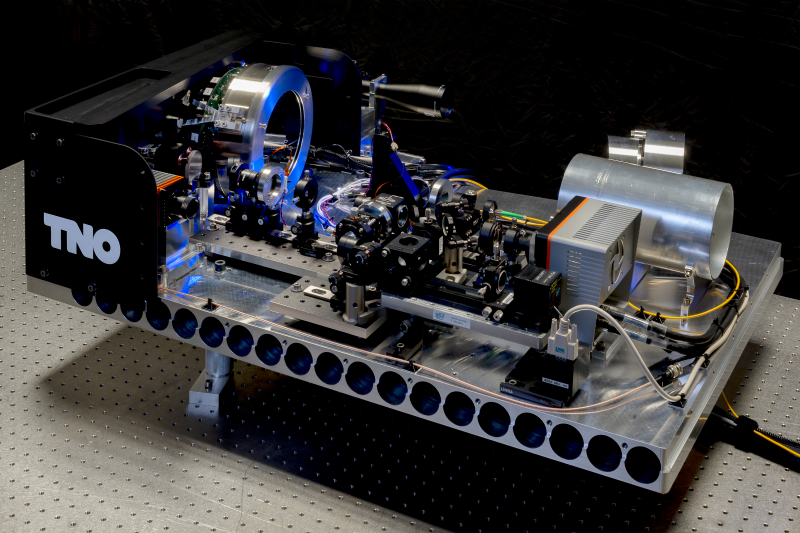
Add titleTOmCAT technology: a solution for ever-increasing network traffic
Whether it concerns self-driving cars or the sheer volume of films on social media, data usage is continuing to rise and existing connections no longer suffice. The Netherlands Organization for Applied Scientific Research (TNO) and Airbus Defence and Space Netherlands (Airbus DS NL) are jointly developing a safe solution for the rapidly accelerating data traffic: TOmCAT technology.
TOmCAT
TNO and Airbus DS NL want to launch their newly developed technology ‘Terabit Optical Communication Adaptive Terminal (TOmCAT)‘ onto the market. This technology enables laser communication between satellites and stations on earth. The rapid transfer rates between these stations guarantee secure transmission of data at much higher speeds.
Collaboration
The technology is still under development. TNO and Airbus DS NL recently jointly signed a Memorandum of Understanding (MoU). This confirmed the companies’ ambition to develop the technology further. The feasibility and effectiveness of the technology will be verified within the project. This lays the foundation for the design of future ground stations.
Airbus DS NL is going to build the ground stations. The telecommunications industry will then be able to make use of this technology that assures a high data transfer capacity. TNO and Airbus DS NL will continue to work together until the product is brought to market.
The Netherlands at the forefront
According to TNO and Airbus DS NL, TOmCAT consolidates the Dutch leading position in the optical communication technology field. Erik Fritz, program manager at TNO: “By making this complex technology commercially available, the Netherlands will stay at the forefront of the next generation of communication.”
According to Fritz, the Netherlands is one of the few countries currently working on this technology. “We are particularly proud to be able to share our know-how and applied innovation with another Dutch player.”
Also interesting:
Dossier Wireless Communication
6G in 2030: ‘Ring ring, the grocery drone is at your doorstep’

